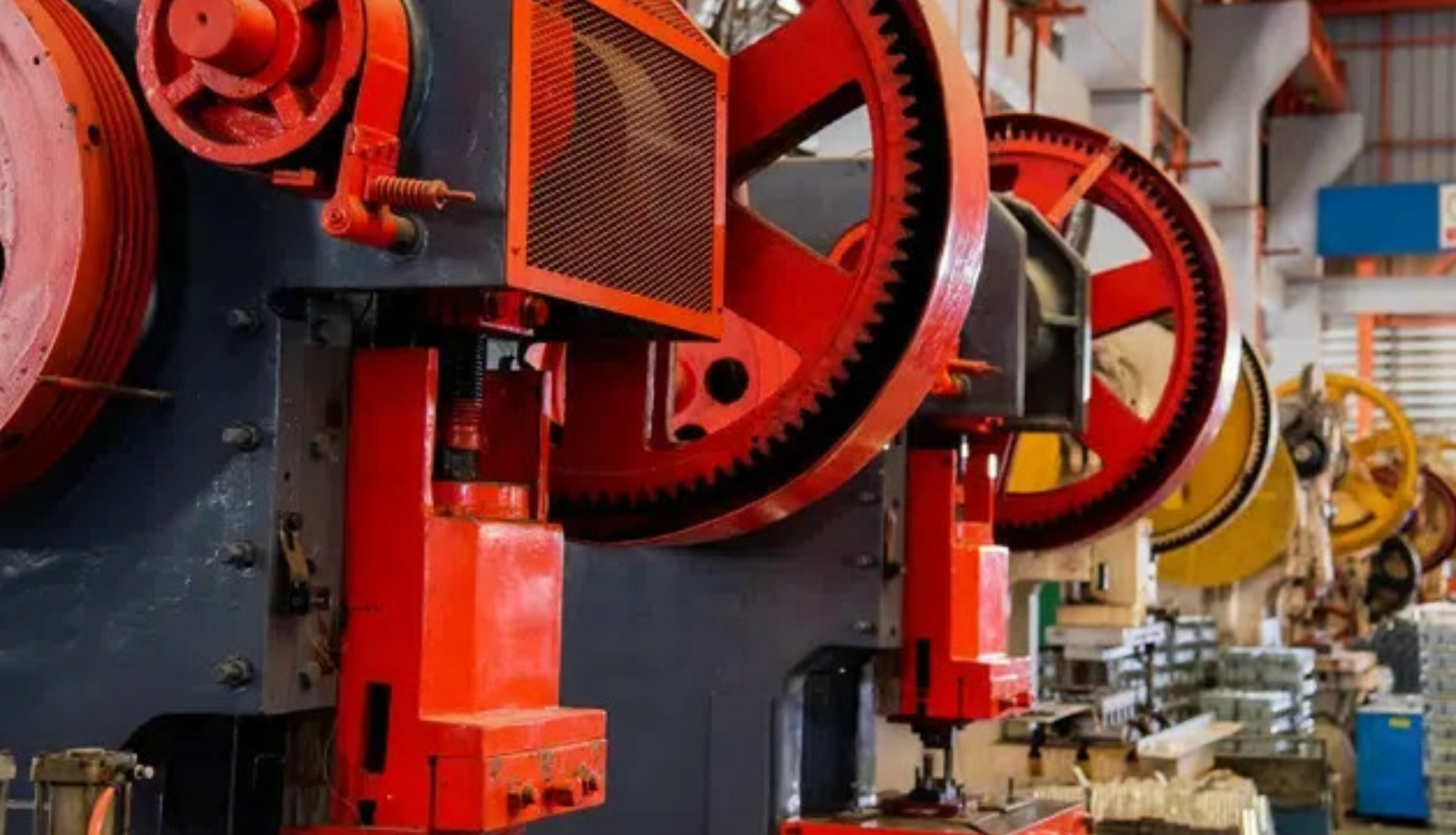
Enhancing Aftermarket Efficiency With Remote Staffing
In an ever-evolving business landscape, aftermarket services are becoming increasingly critical for companies aiming to maintain a competitive edge. The rise of remote staffing, fueled by advancements in technology and a shift in workplace norms, has emerged as a game-changer in enhancing efficiency. This article delves into the transformative impact of remote staffing strategies on aftermarket services, illustrating how human connections, even from a distance, can significantly elevate operational performance.
Breaking Barriers: The Human Connection
While remote work may seem impersonal, it brings a fresh opportunity for human connections to thrive across vast distances. Consider Sarah, a remote support specialist for an automotive aftermarket company. Through virtual meet-ups and chat platforms, Sarah forges meaningful relationships with her colleagues and clients, easing the challenges of distance. This humanization of remote roles fosters trust, facilitating better communication and collaboration. By leveraging these connections, businesses can enhance customer experiences and drive loyalty, proving that efficiency doesn’t have to come at the expense of warmth.
Streamlining Operations: Tech Tools that Work
The integration of technology into remote workflows is crucial to optimizing aftermarket efficiency. Companies are increasingly adopting innovative tools like project management software, AI-driven inventory systems, and customer relationship management (CRM) platforms. For instance, imagine a remote team using a cloud-based CRM to track customer interactions and feedback in real-time. This empowers specialists like Sarah to respond faster to client inquiries, provide personalized service, and manage complex customer needs with ease. As a result, the remote workforce can streamline operations, leading to higher productivity and satisfaction for both employees and customers alike.
Flexibility: The New Normal in Staffing
One of the most significant benefits of remote staffing is flexibility. Aftermarket teams can now operate across various time zones, offering around-the-clock service to customers. This flexibility not only satisfies customer demands for immediate support but also allows companies to tap into a global talent pool. Meet John, a technical support agent based in Europe, who works seamlessly with a team located in North America. His unique insights into market preferences and best practices help the company adapt more swiftly to changing customer expectations, highlighting how diverse expertise can still align with company goals thanks to the flexibility of remote staffing.
A Culture of Performance: Empowering Teams
In a remote setup, fostering a culture of performance and accountability is paramount. Companies must empower employees through training opportunities and clear communication of expectations. Think about the impact of regular virtual check-ins, where team leaders provide constructive feedback while acknowledging achievements. When employees feel valued, they are motivated to perform better. Missy, a remote project manager, embraces this approach, encouraging her team to set personal goals while also aligning them with organizational objectives. This communal sense of purpose not only enhances efficiency but also nurtures employee engagement and job satisfaction.
Cost-Effective Solutions: Enhancing the Bottom Line
The shift to remote staffing offers several cost advantages. By reducing overhead associated with physical office spaces, companies can invest more in human resources and technology, driving efficiencies in aftermarket operations. Companies can allocate funds to enhance training programs for remote staff, ensuring they remain at the forefront of industry advancements. This not only ensures that employees like Sarah and John are well-equipped to handle customer needs but also contributes to a stronger bottom line. When businesses save on operational costs while simultaneously improving service delivery, the outcome is a win-win situation.
A Vision for the Future: Sustainability and Scalability
As the business world embraces the power of remote staffing, the future of aftermarket services looks promising. Remote teams are not just a temporary solution to bridge gaps; they represent a strategic shift toward sustainability. Companies can maintain efficient operations while reducing their carbon footprint, as remote work minimizes the need for commuting and large office spaces. Moreover, this model allows for scalability, enabling businesses to grow and adapt quickly to changing market demands. With remote staffing leading the charge, the aftermarket services sector can look forward to a future defined by resilience, efficiency, and human-centered approaches.
In conclusion, enhancing aftermarket efficiency through remote staffing is not about sacrificing personal connection for convenience—it’s about leveraging technology to forge relationships that lead to improved service delivery. The real potential lies in creating an inclusive atmosphere where employees thrive, customers feel valued, and the business success becomes a collective achievement. Embracing this forward-thinking approach is not just a trend; it’s a blueprint for lasting growth in the aftermarket industry.

Remote Staffing Boosts Aftermarket Services by Providing Cost-effective, Specialized Support
In today’s fast-paced business environment, the need for cost-effective and specialized support in aftermarket services is more crucial than ever. Remote staffing has emerged as a game-changer, providing companies with access to skilled professionals who can help streamline operations, enhance customer satisfaction, and reduce overhead costs. But beyond the numbers, what truly sets remote staffing apart is the human connection that bridges the gap between businesses and their customers.
The Shift Towards Remote Staffing
As companies aim to adapt and thrive in an increasingly digital landscape, many are recognizing the benefits of remote staffing, particularly in aftermarket services such as customer support, technical assistance, and logistics management. These roles, once confined to traditional office settings, have seen a significant shift towards remote solutions. Not only does this allow businesses to access a global talent pool, but it also enables them to respond more swiftly to customer needs, thanks to a cadre of dedicated remote workers ready to assist, regardless of time zones.
Specialized Expertise That Matters
One of the key advantages of remote staffing lies in the ability to tap into specialized skill sets that may not be readily available locally. For instance, a tech company may require a remote team of customer service representatives fluent in multiple languages to support clients worldwide. By employing experts in various fields, businesses can provide unparalleled service levels without the burden of extensive training costs. This specialized expertise can lead to higher customer satisfaction rates, ultimately enhancing brand loyalty and driving repeat business.
Cost Savings Without Sacrificing Quality
At the heart of the remote staffing phenomenon is the tangible cost savings that businesses can achieve. With the rising costs of office space and employee benefits, outsourcing certain roles often proves to be a financially savvy decision. Remote staffers save companies on overhead expenses, allowing them to allocate more resources toward innovation, product development, and improving customer experiences. However, it’s essential to strike a balance between cost and quality. By partnering with reputable remote staffing agencies, businesses can ensure they receive skilled professionals who understand the intricacies of aftermarket services and can deliver consistent quality support.
Fostering Connections in a Digital World
While the benefits of remote staffing are clear, the human touch remains indispensable in aftermarket services. Customers want to feel heard and valued, and remote workers often bring a level of empathy and understanding to their interactions that can make a lasting impression. Companies that prioritize training their remote teams in effective communication and customer relationship management can cultivate connections that drive loyalty. In a world where transactions can feel transactional, fostering genuine human connections can distinguish a brand from its competitors.
Navigating Challenges with Flexibility
Of course, transitioning to a remote staffing model is not without its challenges. Maintaining team cohesion, ensuring effective communication, and managing time zones can pose hurdles for businesses. However, embracing technology allows companies to mitigate these issues. Collaboration tools, virtual training sessions, and regular check-ins can help create a unified culture among remote teams. Moreover, the flexibility offered by remote staffing can empower employees, allowing them to work during peak hours that align with their strengths, ultimately benefiting both the employee experience and customer satisfaction.
A Bright Future for Aftermarket Services
As we look to the future, it’s clear that remote staffing will continue to play a pivotal role in shaping the landscape of aftermarket services. Businesses that embrace this model not only stand to gain from cost savings and access to specialized talent but also have the opportunity to humanize their brand by prioritizing customer connections. In an age defined by digital interactions, the blend of technology and empathy may very well be the key to thriving in an ever-evolving marketplace. As companies navigate this transformation, finding the right balance between efficiency and personal touch will ultimately define their success in the aftermarket realm.

Outsourcing in Original Equipment Manufacturing
In the dynamic landscape of Original Equipment Manufacturing (OEM), the practice of outsourcing has evolved from a mere cost-cutting measure to a strategic imperative. While cost efficiency remains a key driver, companies increasingly recognize that outsourcing can foster innovation, enhance flexibility, and provide access to specialized skills. Yet, the human aspect of this transition—how it impacts employees, suppliers, and customers—should not be overlooked.
The Rise of Strategic Outsourcing
Outsourcing in OEM has seen significant growth in recent years, driven by globalization and technological advancements. Once limited to non-core functions, businesses now outsource critical operations—from design and engineering to production and logistics. This shift allows smaller manufacturers to compete on a global scale by leveraging the expertise and efficiencies of specialized firms. Moreover, by redirecting focus to core competencies, OEMs can innovate more effectively, producing high-quality products that meet evolving customer demands.
Faces Behind the Numbers: Talent and Expertise
At the heart of every outsourcing decision lies a complex web of human relationships. The success of outsourcing doesn’t only stem from operational efficiencies; it hinges on the talent and expertise of the individuals involved. Many OEMs partner with specialized firms that bring in-depth knowledge and skills, driving innovation in ways internal teams may struggle to achieve alone. However, it’s imperative that companies approach outsourcing as a collaboration, nurturing these relationships to create a seamless blend of internal and outsourced capabilities.
Managing the Human Element: Job Displacement Concerns
Despite the evident benefits, outsourcing can evoke fear and resistance among staff. Many employees worry about job security and potential relocation due to outsourcing decisions. To mitigate these concerns, OEMs must prioritize transparent communication and involve employees in the decision-making process. Offering retraining programs and opportunities for career advancement can transform the narrative from one of fear to one of growth. It’s essential for organizations to recognize that their workforce is a vital asset in navigating the complexities of outsourcing.
Strengthening Supplier Relationships: A Win-Win Approach
Successful outsourcing also hinges on robust supplier relationships. You’re not just signing contracts; you’re forging partnerships. Effective communication and shared values are vital to ensuring alignment between OEMs and their outsourcing partners. By investing in these relationships, both parties can work towards mutual goals, leading to enhanced product quality and innovation. This collaborative spirit is the heartbeat of successful outsourcing; it thrives on shared knowledge and open dialogue.
The Customer Connection: Quality and Reliability
Ultimately, outsourcing decisions must prioritize customer satisfaction. A successful OEM balances innovation and cost-efficiency while ensuring that product quality is never compromised. Customers expect reliable, high-quality products delivered on time, and seamless collaboration between in-house teams and outsourced partners is essential to achieve this goal. By maintaining this focus, OEMs can build trust and loyalty among their customer base, securing their position in a competitive market.
Embracing the Future of OEM Outsourcing
As the outsourcing landscape continues to evolve, OEMs must not lose sight of the human aspects that drive success. Companies that approach outsourcing strategically—keeping the employee experience, supplier relationships, and customer satisfaction at the forefront—will be well-equipped to navigate the complexities of the manufacturing environment. It’s a journey of transformation, one that calls for empathy, collaboration, and a committed focus on building a sustainable future for all stakeholders involved. As we look forward, the human touch will remain an invaluable asset in the world of Original Equipment Manufacturing.

Outsourcing Key Oem Roles Drives Innovation and Improves Production Efficiency
In today’s rapidly evolving business landscape, the quest for innovation and operational efficiency is more critical than ever. Manufacturers, especially those in the Original Equipment Manufacturer (OEM) sector, are increasingly turning to outsourcing as a strategy to enhance their production capabilities. This move not only alleviates internal pressures but also fosters an environment ripe for innovation. Let’s explore how outsourcing key OEM roles can bolster both creativity and efficiency in manufacturing.
Embracing Change: The Need for Adaptability
The global market is constantly changing, and many OEMs are finding it challenging to stay ahead of the curve. Traditional manufacturing approaches can sometimes stifle creativity and hinder adaptive thinking. By outsourcing key roles—such as research and development, quality control, and even assembly—OEMs can break free from outdated methodologies. This strategy allows them to tap into specialized expertise, enabling companies to produce cutting-edge designs while also streamlining processes. When basic tasks are managed externally, in-house teams can devote their energies to innovation—dreaming up new products that meet the evolving needs of consumers.
Human Connection: A Design for Life
Outsourcing isn’t just about cutting costs; it’s also about connecting with a wider scope of talent. The international labor market is teeming with skilled professionals whose insights can profoundly affect product design and functionality. By collaborating with diverse teams around the globe, OEMs can infuse their products with fresh perspectives and a wealth of cultural insight. This human element is critical, especially when designing products that resonate with consumers on a deeper level. Ultimately, the emphasis on meaningful collaboration leads to solutions that are both innovative and relevant.
Efficiency Unleashed: Streamlining Production Processes
Apart from driving creativity, outsourcing key OEM roles translates into improved production efficiency. By delegating non-core functions—such as maintenance, logistics, and even customer service—manufacturers can focus their resources on core competencies. This streamlining of operations often results in reduced lead times and improved product quality. Engaging specialized firms that specialize in specific processes enables OEMs to adopt best practices without the heavy burden of burdening their internal teams. The end result is a more agile operation that can respond to market demands quickly.
The Power of Technology: Leveraging Expertise
In the world of manufacturing, technological advancement is paramount. Many outsourcing partners come equipped with the latest technology and specialized knowledge that an OEM might not have in-house. Harnessing this technological prowess allows for the adoption of advanced manufacturing techniques without the significant investment in new equipment. Furthermore, outsourcing veterans have hands-on experience with innovations like IoT, AI, and automation, enabling OEMs to integrate these elements seamlessly into their processes. This not only enhances efficiency but also positions companies at the forefront of industry advancements.
Building Strong Partnerships: A Win-Win Situation
Successful outsourcing hinges not only on choosing the right partner but also on building a solid relationship. Frequent communication, shared goals, and joint accountability can transform outsourcing arrangements into partnerships focused on mutual success. Such collaboration opens pathways to innovation and fosters a culture of continuous improvement. Furthermore, reputable outsourcing partners will contribute their own systems for quality assurance and process optimization, ensuring that everyone involved benefits from the shared expertise.
Conclusion: A Forward-Thinking Strategy
Outsourcing key OEM roles is not merely a trend; it is a forward-thinking strategy that propels businesses towards innovation and production efficiency. As OEMs break down traditional barriers and leverage external expertise, they position themselves for sustainable growth in a competitive world. Embracing this collaborative approach allows manufacturers to not only keep pace but also thrive in a landscape defined by constant change. In doing so, they can look forward to a future where creativity and efficiency coexist harmoniously, paving the way for groundbreaking advancements and exceptional products.




